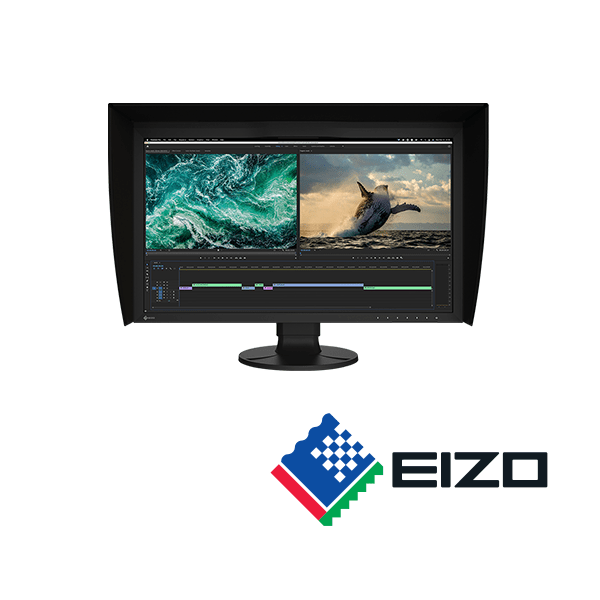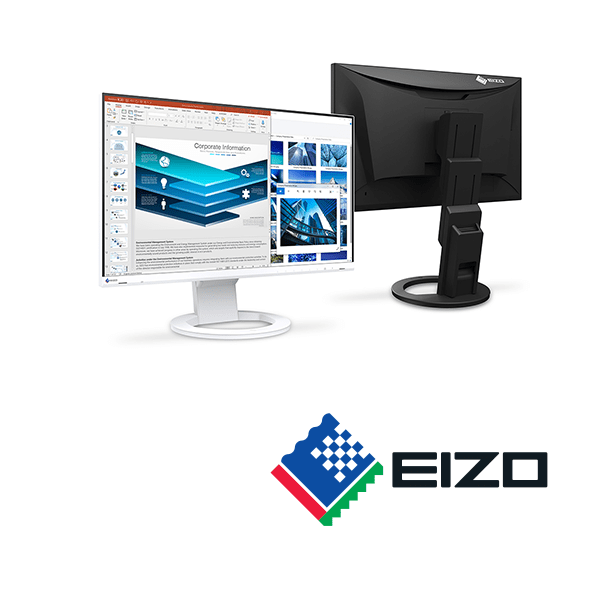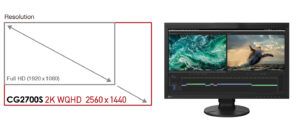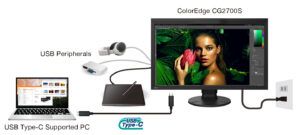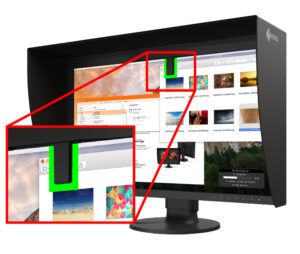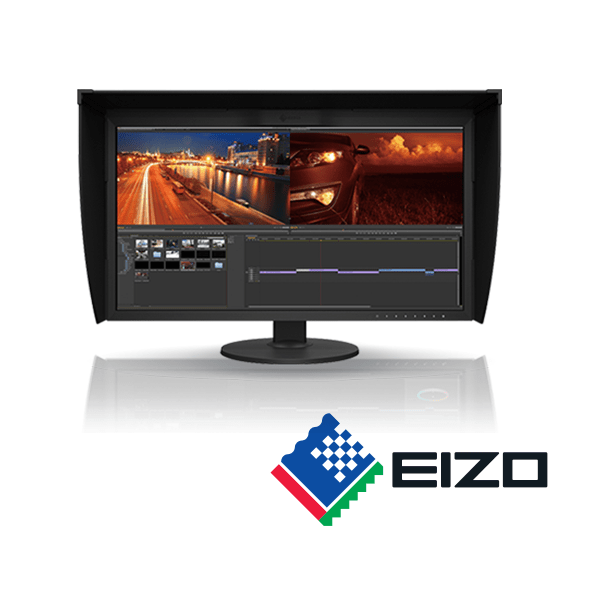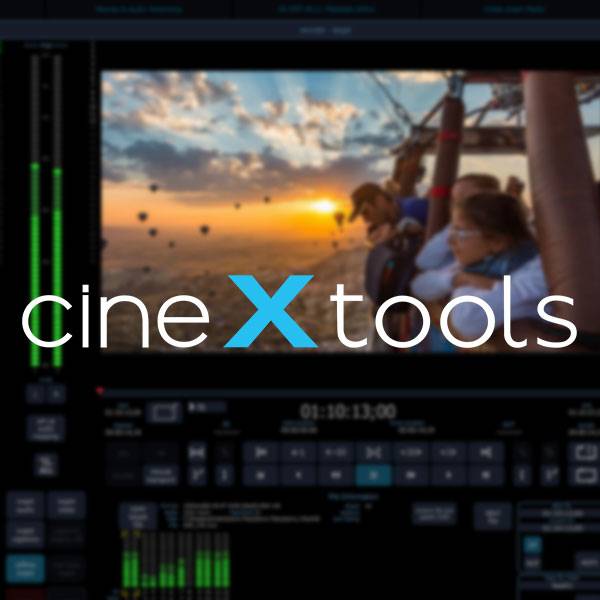EIZO ColorEdge CG2700S production monitor 2560 x 1440 resolution
This 27-inch monitor marks a new generation of ColorEdge with a new exterior design.
EIZO ColorEdge CG2700S. With 2K WQHD (2560 x 1440) resolution, 400 cd/m2 high brightness, and HDR gamma support, the monitor reproduces content in remarkable detail. USB Type-C® connectivity provides a streamlined experience so professionals in video editing, game development, photography, and more can focus on creating.
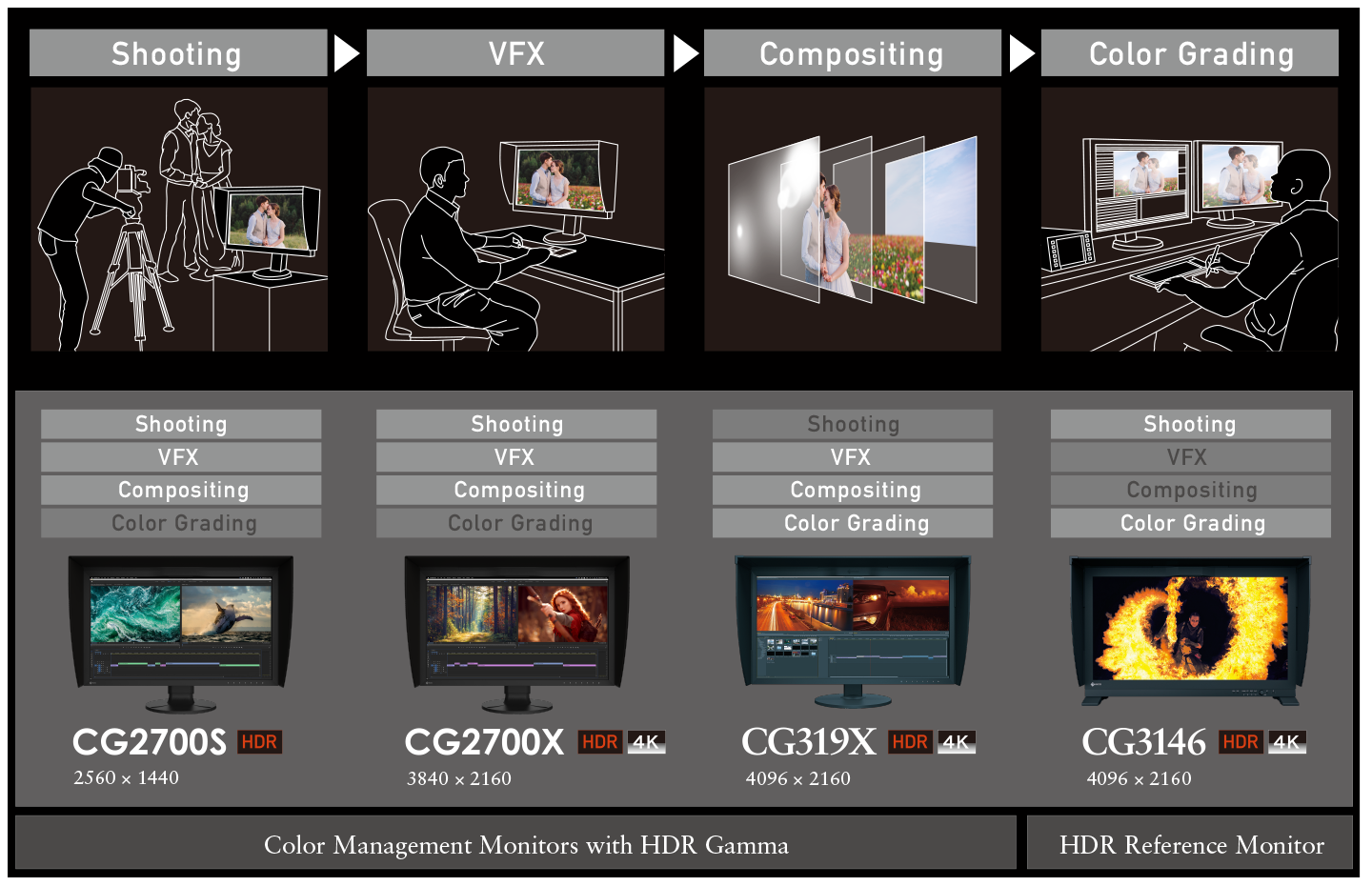
2K WQHD Resolution
The EIZO ColorEdge CG2700S displays at 2K WQHD (2560 x 1440) resolution. The 27-inch screen provides ample space for displaying Full HD content in full with enough space to show toolbars, palettes, and other windows or applications. This makes the monitor versatile for video editing, 3DCG creation, game development, photography, and other creative fields. EIZO also offers a 4K UHD (3840 x 2160) model with the ColorEdge CG2700X for creators focused on 4K content.
Vivid Colors Reproduced to Industry Standards
The monitor’s wide color gamut faithfully reproduces 98% of the DCI-P3 standard used in digital cinema and supports the BT.2020 standard used in broadcasting. In addition, it covers 99% of the Adobe RGB color space so images shot in Adobe RGB will be displayed correctly. It also covers almost the entire ISO-coated and US web-coated CMYK color spaces used in printing.
Broadcast and Cinema Presets
Preset modes for DCI-P3, BT.709, and BT.2020 ensure you can work in the appropriate color spaces and gamma values. In addition, preset modes for PQ (DCI and BT.2100) and HLG (BT.2100) are available for viewing HDR content. With the built-in calibration sensor, you can conveniently adjust or maintain the brightness setting for each preset.
Post Production
Supports HLG (hybrid log-gamma) and the PQ (perceptual quantization) curve for displaying and editing HDR (high dynamic range) video content.
Streamlined Connection
USB Type-C connectivity that allows you to display video, transmit USB signals, access LAN connection, and supply 94W of power to a connected device such as a tablet or notebook PC. This convenient multi-purpose connectivity makes it faster and easier to connect when moving between workstations or working remotely.
Stable Network Connection
While many modern laptops are not equipped with a dedicated LAN port, the monitor has one directly built in for stable wired connection. Connecting a laptop via USB Type-C provides access to the network through the monitor for sharing creative assets and files, carrying out post production work remotely, and enables network-based color management via ColorNavigator Network.
EIZO MAC Address Clone Utility software temporarily assigns the MAC address of a connected PC to the monitor, granting network access to authenticated devices, and preventing network access from unauthenticated devices.
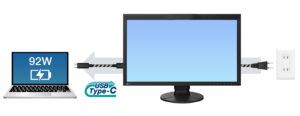 Single Cable Connection with USB Type-C
Single Cable Connection with USB Type-C
The EIZO ColorEdge CG2700S features USB Type-C connectivity that allows you to display video, transmit USB signals, and supply power to a connected device such as a tablet or notebook PC. This convenient multi-purpose connectivity makes it faster and easier to connect when moving between workstations or working remotely.
Built-In Sensor to Automate Your Workflow
ColorEdge were the first monitors in the world to have a built-in calibration sensor for color critical applications. The ColorEdge CG2700s’s built-in sensor can be set to calibrate the monitor automatically at designated times. This eliminates the need for a third-party calibration device and ensures your screen stays color-accurate. In addition, the sensor swings onto the screen, taking up minimal space and allowing you to continue working even during calibration
ColorNavigator 7 Color Management Software
A monitor needs to be calibrated at regular intervals to maintain color accuracy. EIZO’s proprietary ColorNavigator 7 software provides an intuitive and highly precise solution to color management. It allows you to schedule automatic recalibration, calibrate all color modes simultaneously, and conduct correlation with external sensors to match the studio’s internal color management framework. Calibration information is saved to the monitor instead of the operating system so users do not have to recalibrate even when using a different PC.
| Type: | IPS |
| Backlight: | Wide-Gamut LED |
| Size: | 27.0″ (68.5 cm) |
| Native Resolution: | 2560 x 1440 (16:9 aspect ratio) |
| Viewable Image Size (HxV): | 596.7 x 335.7 mm |
| Pixel Pitch: | 0.233 x 0.233 mm |
| Pixel Density: | 109 ppi |
| Display Colours: | 1.07 billion colors, 10-bit display (from a palette of 278 trillion, 16-bit LUT) |
| Viewing Angles (H / V, Typical): | 178˚, 178˚ |
| Brightness (Typical): | 400 cd/m2 |
| Recommended Brightness for Calibration: | – |
| Contrast Ratio (Typical): | 1600:1 |
| Response Time (Typical): | 19 ms (grey-to- grey) |
| Colour Gamut (Typical): | Adobe RGB: 99%, and DCI-P3: 98% |
| VIDEO SIGNALS | |
| Input Terminals: | USB Type-C (DisplayPort Alt Mode, HDCP 2.3), DisplayPort (HDCP 2.3), HDMI (Deep Color, HDCP 2.3) |
| Output Terminals: | – |
| Digital Scanning Frequency (H / V): | USB Type-C, DisplayPort: 26 – 89 kHz / 23 – 61 Hz HDMI: 15 – 89 kHz / 23 – 61 Hz |
| USB | |
| Upstream USB 3.1 Gen 1: | Type-C (DisplayPort Alt Mode, Power Delivery Source 92 W max.), USB 3.1 Gen 1: Type-B |
| Downstream: | USB 3.1 Gen 1: Type-A x 2 USB 2.0: Type-A x 2 |
| USB LAN Adaptor | RJ-45 (1000BASE-T) |
| POWER | |
| Power Requirements: | AC 100 – 240 V, 50 / 60 Hz |
| Maximum Power Consumption: | 187 W |
| Typical Power Consumption: | 17 W |
| Power Save Mode: | 0.5 W or less |
| Built-In Calibration Sensor: | Yes |
| FEATURES & FUNCTIONS | |
| Brightness Stabilisation: | Yes |
| Digital Uniformity Equaliser: | Yes |
| Preset Modes: | User, BT.2020, BT.709, DCI- P3, PQ_DCI-P3, HLG_BT.2100, AdobeRGB, sRGB, Calibration (CAL), SYNC_SIGNAL |
| HDR Gamma | HLG, PQ curve |
| PHYSICAL SPECIFICATION | |
| Dimensions (Landscape, W x H x D): | 638 x 415.9 – 570.9 x 245 mm |
| Dimensions (Without Stand, W x H x D): | 638 x 390 x 86.2 mm |
| Dimensions (Landscape with Hood, W x H x D): | 638 x 390 x 86.2 mm |
| Net Weight: | 9.4 kg |
| Net Weight (Without Stand): | 6.4 kg |
| Net Weight (With Hood): | 9.8 kg |
| Height Adjustment Range: | 155 mm |
| Tilt: | 35 Degrees Up, 5 Degrees Down |
| Pivot: | 90 Degrees |
| Swivel: | 344 Degrees |
| Hole Spacing (VESA Standard): | 100 x 100 mm |
| ENVIRONMENTAL REQUIREMENTS | |
| Temperature: | 0 – 35˚C |
| Humidity (R.H., non condensing): | 20 – 80 % |
| CERTIFICATIONS & STANDARDS | (Please contact EIZO for the latest information) CB, CE, UKCA, TUV/GS, cTUVus, FCC-B, CAN ICES-3 (B), TUV/S, PSE, VCCI-B, RCM, EAC, RoHS, WEEE, TUV/Ergonomics, TUV/Color Accuracy (Quick Stability), FograCert Softproofing System (class A) |
| DEDICATED SOFTWARE | |
| Quick Color Match | Supported |
| ColorNavigator 7 | Supported |
| INCLUDED CABLES | USB Type-C (2 m), HDMI (2 m) |
| ACCESSORIES | AC power cord, USB Type-A – USB Type-B cable (2 m), Setup guide, Adjustment certificate, ScreenCleaner, Monitor hood, Warranty card |
| WARRANTY | 5 Years |
| Warranty Notes | 1) Usage time is limited to 30,000 hours. Brightness of the CG Series is warranted for up to 10,000 hours. 2) Brightness of the CG Series is warranted for up to 10,000 hours if it is used within the recommended brightness of 120 cd/m2 or less and colour temperature between 5000 – 6500 K. 3) Free from bright sub-pixels for 6 months from the date of purchase. With current LCD technology, a panel may contain a limited number of missing or flickering pixels. |

